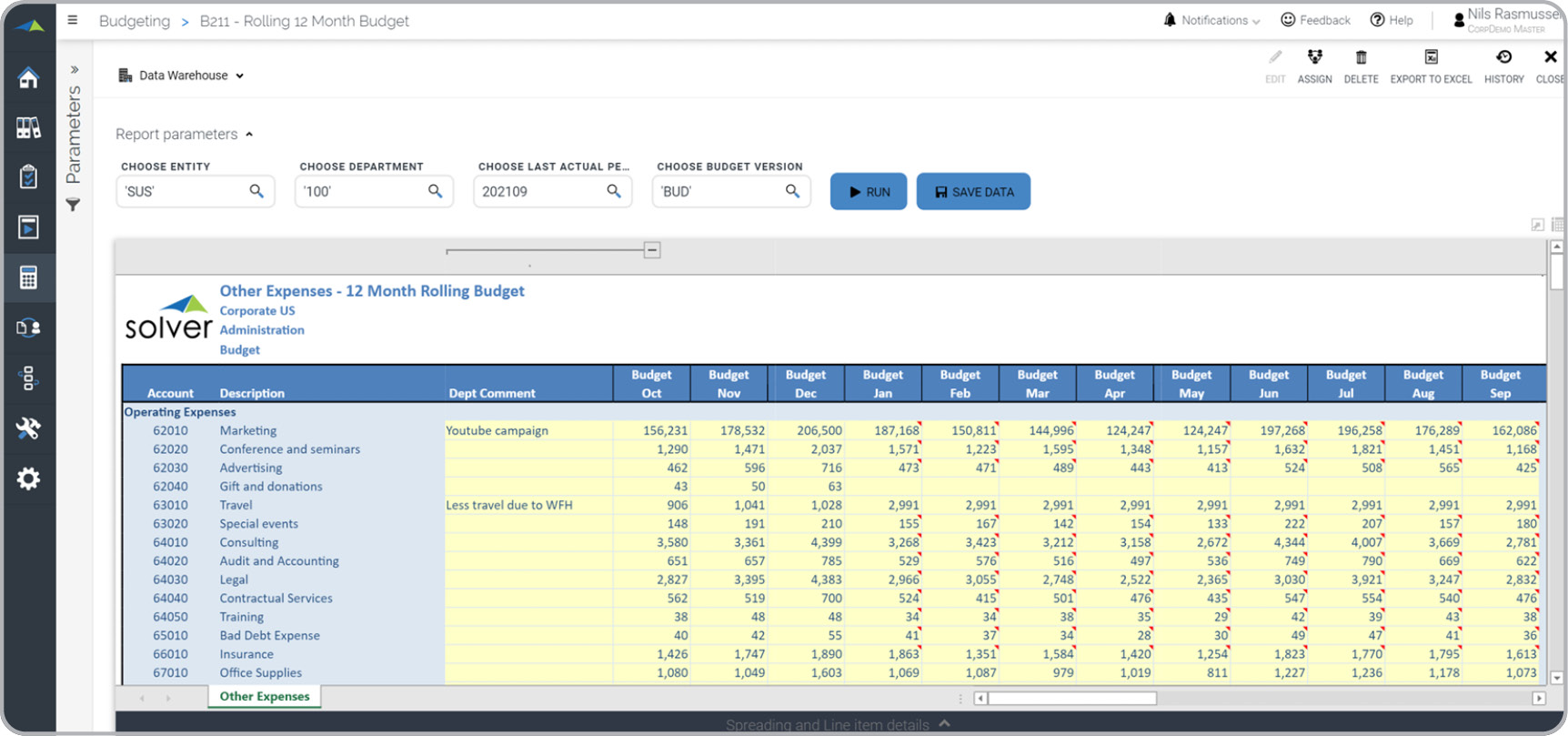Rolling 12 Month Budget Model for Dynamics 365 Business Central
What is
a
Rolling 12 Month Budget Input Form
? A Rolling 12 Month Budget Input Form is a dynamic budgeting tool that offers a unique alternative to the traditional fiscal year budget process. It is used by budget managers to provide a more flexible planning approach. One of the key features of this budgeting template is the ability to display 12 periods of input, starting from the upcoming month, along with corresponding actual data for easy comparison. An example of this planning template is provided below.
Purpose of
12 Month Rolling Budgets Companies and organizations use 12 Month Rolling Budgets to avoid stagnant budgets that often result from the annual budgeting process. Rolling budgets are frequently updated on a monthly or quarterly basis as new months arrive. When incorporated as part of good business practices in a Financial Planning & Analysis (FP&A) Department, a company can improve budget accuracy and minimize the risk of managers lacking ownership in budget data due to outdated information.
Benefits to Users A Rolling 12 Month Budget Input Form can provide several benefits to business users. By allowing for more frequent updates and adjustments to the budget, users can make better-informed decisions based on current financial data. The dynamic nature of this budgeting template also provides users with a more comprehensive view of their financial situation, allowing them to identify potential issues early on and make adjustments accordingly. Additionally, by reducing the amount of time spent on manual data entry and analysis, users can become more efficient in their jobs and focus on other critical tasks. Overall, incorporating Rolling 12 Month Budgets as part of a company's financial planning strategy can lead to more accurate budgets, better decision-making, and increased efficiency.
12 Month Rolling Budget
Example Here is an example of a 12 Month Rolling budget form with dynamically generated columns.
You can find hundreds of additional examples
here.
Who Uses This Type of
Planning Template
? The typical users of this type of planning template are: CFOs, Budget Managers and Department Heads.
Other
Planning Template
s Often Used in Conjunction with
12 Month Rolling Budgets Progressive Financial Planning & Analysis (FP&A) Departments sometimes use several different 12 Month Rolling Budgets, along with actual to budget variance reports and other management and control tools.
Where Does the Data for Analysis Originate From? The Actual (historical transactions) data typically comes from enterprise resource planning (ERP) systems like: Microsoft Dynamics 365 (D365) Finance, Microsoft Dynamics 365 Business Central (D365 BC), Microsoft Dynamics AX, Microsoft Dynamics NAV, Microsoft Dynamics GP, Microsoft Dynamics SL, Sage Intacct, Sage 100, Sage 300, Sage 500, Sage X3, SAP Business One, SAP ByDesign, Netsuite and others. In analyses where budgets or forecasts are used, the data most often originates from in-house Excel spreadsheet models or from professional corporate performance management (CPM/EPM) solutions.
What Tools are Typically used for Reporting, Planning and Dashboards? Examples of business software used with the data and ERPs mentioned above are:
- Native ERP report writers and query tools
- Spreadsheets (for example Microsoft Excel)
- Corporate Performance Management (CPM) tools (for example Solver)
- Dashboards (for example Microsoft Power BI and Tableau)
- View 100’s of reporting, consolidations, planning, budgeting, forecasting and dashboard examples here
- Discover how the Solver CPM solution delivers financial and operational reporting
- Discover how the Solver CPM solution delivers planning, budgeting and forecasting
- Watch demo videos of reporting, planning and dashboards
TAGS: Reporting, Forecasting, Budgeting, CPM, ERP, Dashboards, Financial Reporting, Template Library
Global Headquarters
Solver, Inc.
Phone: +1 (310) 691-5300

